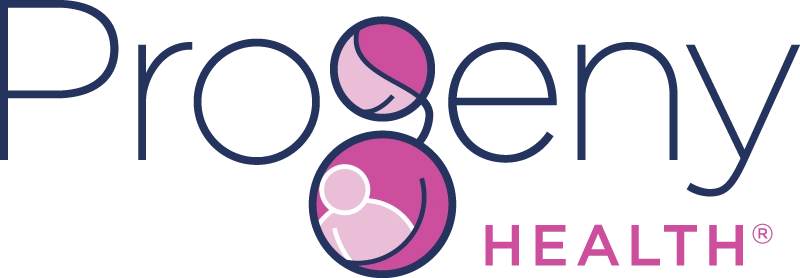 Filed Under: Innovation
Filed Under: InnovationProgenyHealth and the Path to Data Interoperability

In healthcare, interoperability is the ability of hospitals, health systems, plans and providers to exchange information leveraging standard formats, and to use it once received. Why is this important?
Without interoperability, if a NICU infant suddenly needed an urgent transfer, it’s likely that care teams would not be alerted promptly to adjust their plan of care or step in to help the families in a timely fashion. Eventually, the notification would arrive, but typically via a phone call or fax. That results in a missed opportunity to quickly influence the best possible outcomes for that infant and family.
Today, nurses and physicians capture patient data within electronic medical records, but EMR systems don’t always talk to one another, nor do they always share information with a health plan’s downstream vendors. Unfortunately, this leads to the inability to know a change in status or a new diagnosis. Hospital systems, doctors’ offices, and health plans all subscribe to various EMR vendors, and while most EMR vendors can support the interoperability standards that exist today, some still require proprietary formats, and others make it difficult to obtain access even when authorized to obtain the information.
ProgenyHealth’s role in the healthcare system requires interoperability to ensure the best outcomes. As the hub for NICU care management between hospitals, health plans, providers, support organizations, and patients, we connect to all the stakeholders. Unlike pilots and air traffic controllers who use “Aviation English” to make flying safe worldwide, healthcare communications speak with various data formats. While interoperability standards have existed for close to 20 years now, adoption of those standards has been slow across the industry.
For this reason, the Federal government (CMS) is working to accelerate and promote the development of interoperability across the health care system. The goal is to adopt interoperability standards that facilitate patient-centered care, improve outcomes, and reduce costs.
ProgenyHealth has been leading the effort in the NICU space to support our health plan partners as they transition to standardized data formats, including HL7 and EDI 278 transactions.
The new CMS rule requires payers to share claims and other health information securely with patients in a safe, user-friendly, electronic format. The rule also requires hospitals to send electronic notifications to other providers anytime a patient is admitted, discharged, or transferred from the hospital. These standards will allow ProgenyHealth to deliver more timely care coordination and, ultimately, better patient outcomes.
“We’re working with all our clients to become more interoperable in terms of how data and information are exchanged throughout the healthcare system,” said Sherry Anderson, ProgenyHealth president. “In January, we completed an EDI 278 implementation with a large national health plan and are working on getting all of our clients and partners connected for real-time information exchange.”
ProgenyHealth is a leading proponent for seamless care management, but there is also understandable pushback from the industry. Giving consumers access to their health data in the form of new apps could spark privacy concerns.
We’re working with all our clients to become more interoperable in terms of how data and information are exchanged throughout the healthcare system
Sherry Anderson, President of ProgenyHealth
“The rule lacks the necessary guardrails to protect consumers from actors such as third-party apps that are not required to meet the same stringent privacy and security requirements as hospitals,” Rick Pollack, CEO of the American Hospital Association, said. “This could lead to third party apps using personal health information in ways in which patients are unaware.”1
But the former Secretary of HHS, Alex Azar, disagreed. He felt the old system created unnecessary silos of information. “Patients cannot easily access their medical records, and providers on different systems cannot effectively communicate,” Azar said. “Those holding patient data have prevented new market entrants from participating in this space.”2
Every industry is leveraging “big data” in big ways – defined as the ability to amass large amounts of data from numerous sources to deliver deeper insights for decision-making. Big data in healthcare include electronic medical records, medical imaging, genomic sequencing, payor records, pharmaceutical research, wearables, medical devices, and more. The promise of big data in healthcare will allow payors and providers to make better medical and financial decisions while delivering an ever-increasing quality of patient care.
“The ultimate goal is data exchange, but the adoption in the healthcare ecosystem is not there yet, the system relies heavily on faxes to support data exchange” said Faisal Khalid, Chief Technology Officer for ProgenyHealth. “Today, we are using natural language processing (NLP) and OCR to digitize clinical information that we receive via faxes, to identify diagnosis codes. This is an area where ProgenyHealth is building a bridge to the future.”
The clinical benefits come first. “When we think of a NICU population and the services that ProgenyHealth provides, the faster we can get those services to families and infants in need, the greater likelihood that they’ll have a good outcome,” Sherry Anderson underscored. “The only way to eliminate the lag time in delivering care is to implement these new standards with health plans, solution providers, partners, and with the hospitals that we work with. We are fully committed to that effort.”
- www.aha.org/press-releases/2020-03-09-statement-onc-final-rule
- insurancenewsnet.com/oarticle/hhs-secretary-azar-issues-remarks-at-office-of-national-coordinator-for-health-information-technology-annual-meeting





 Prev
Prev